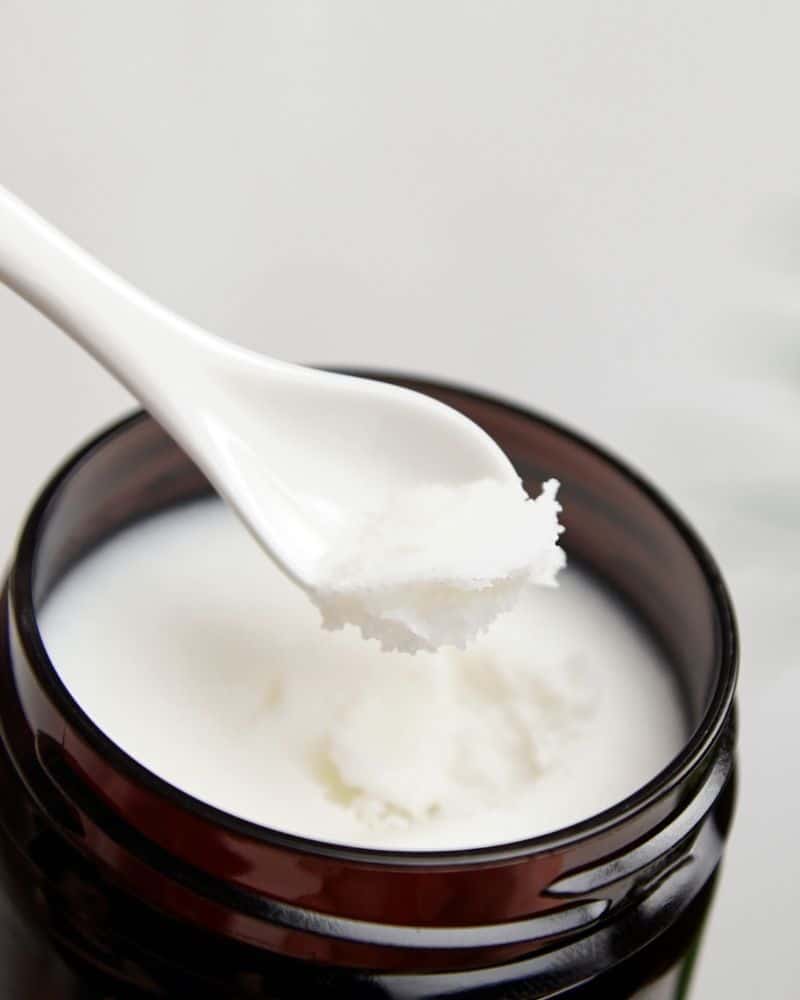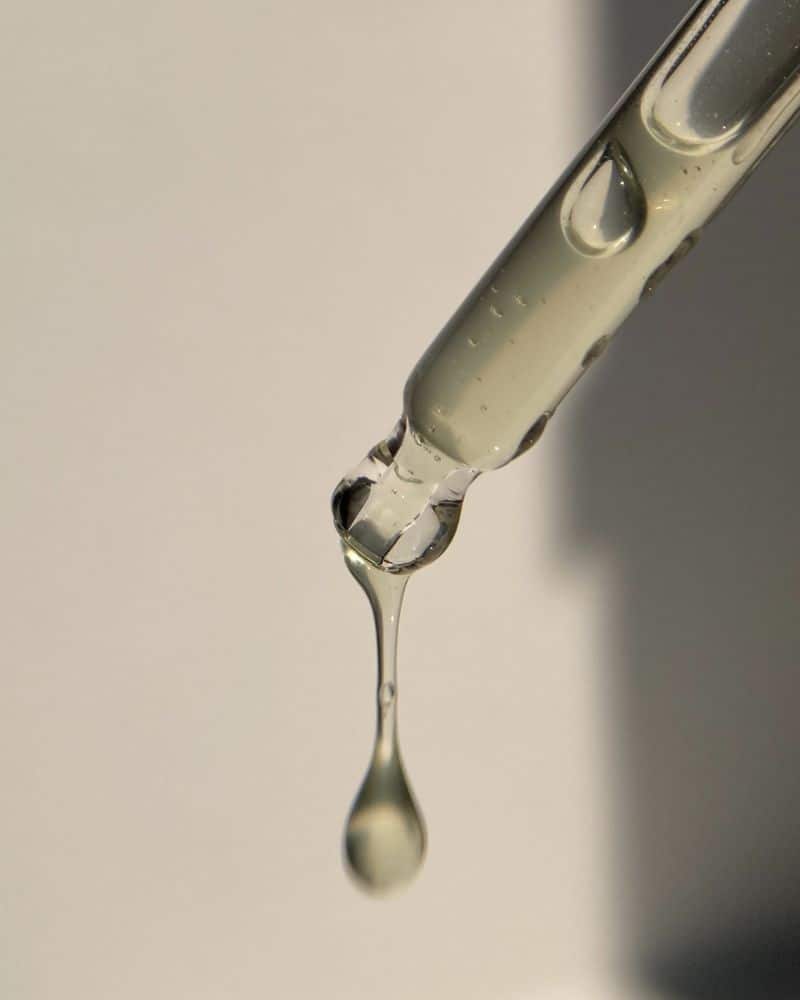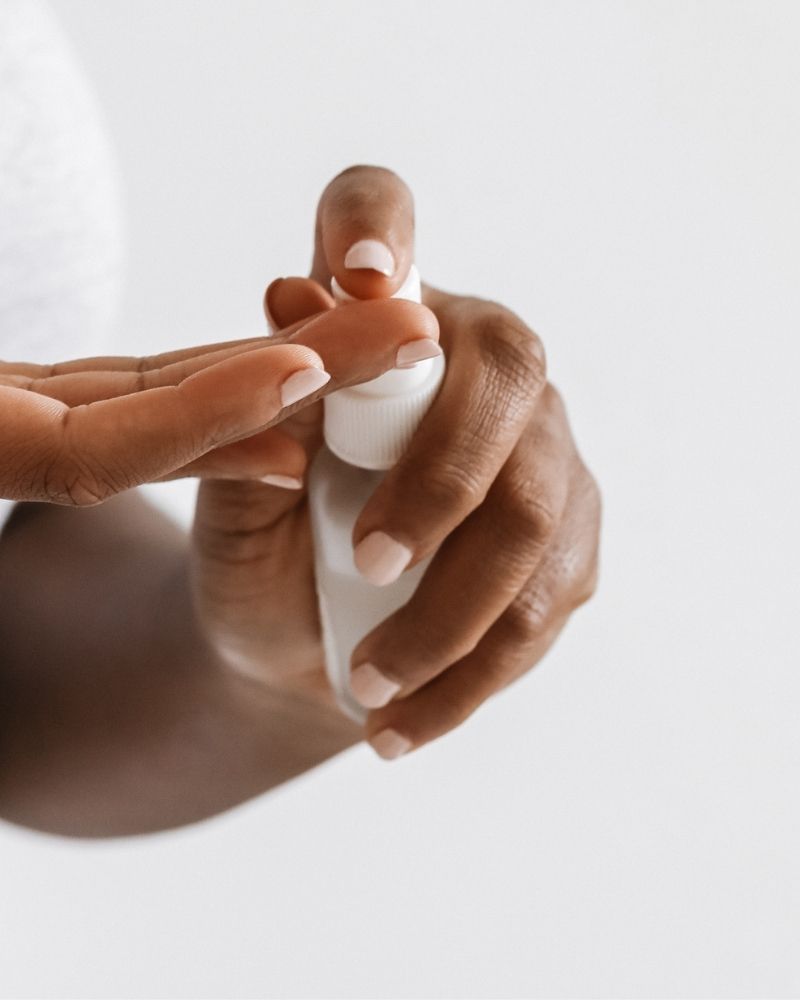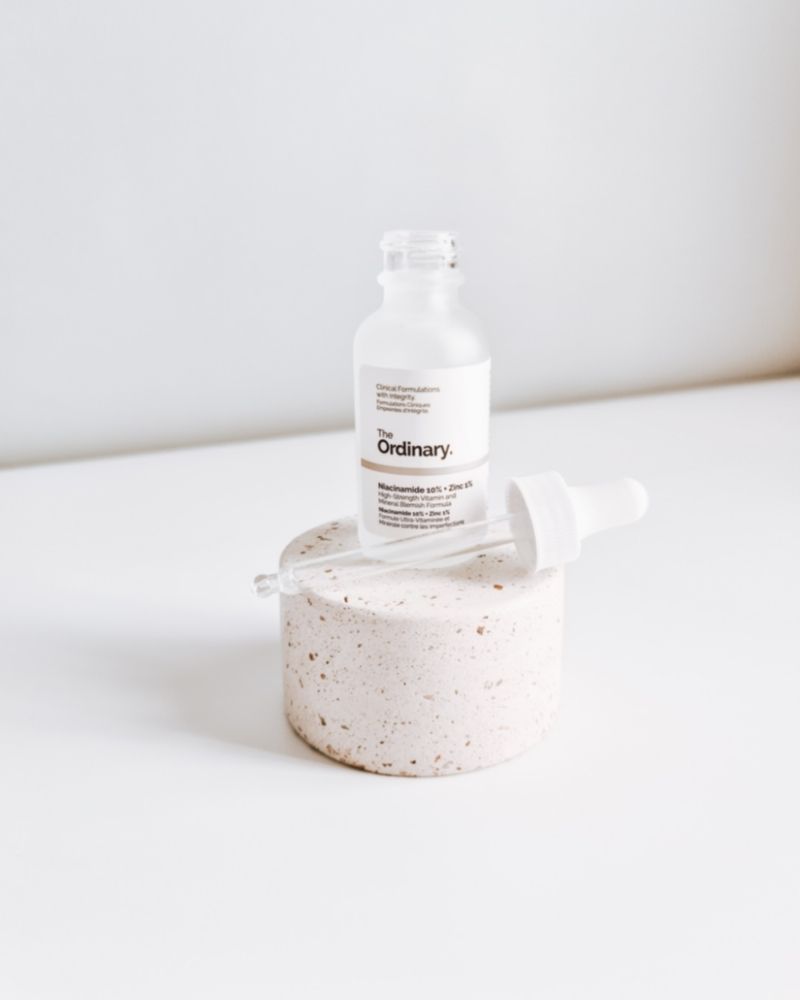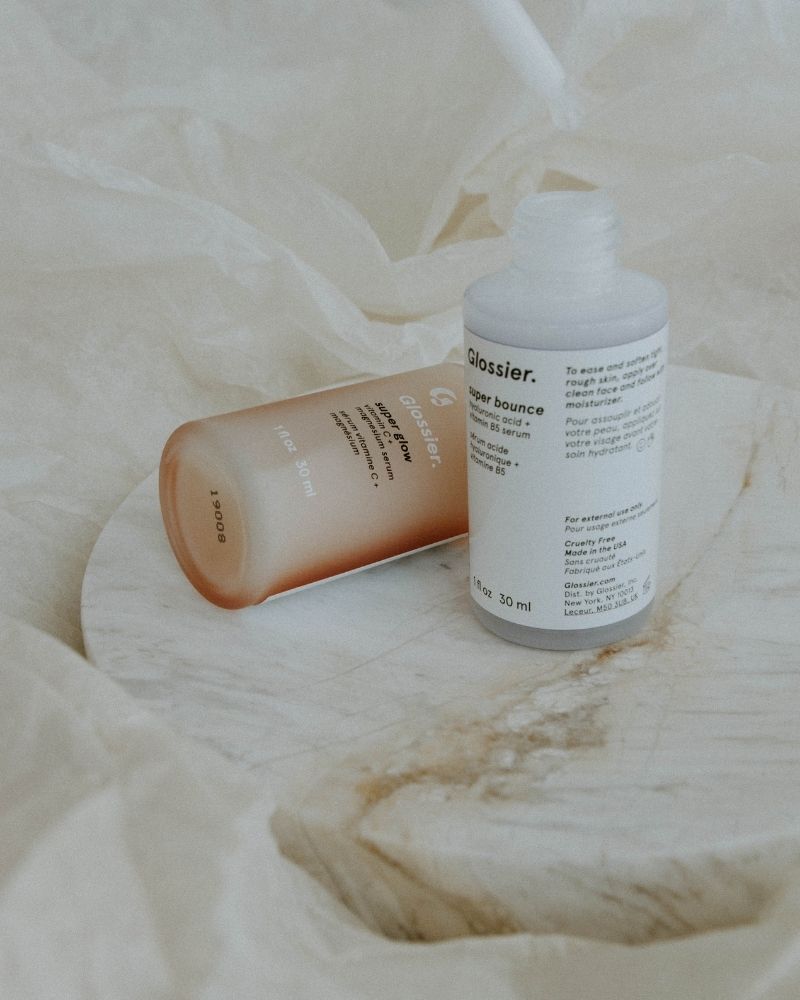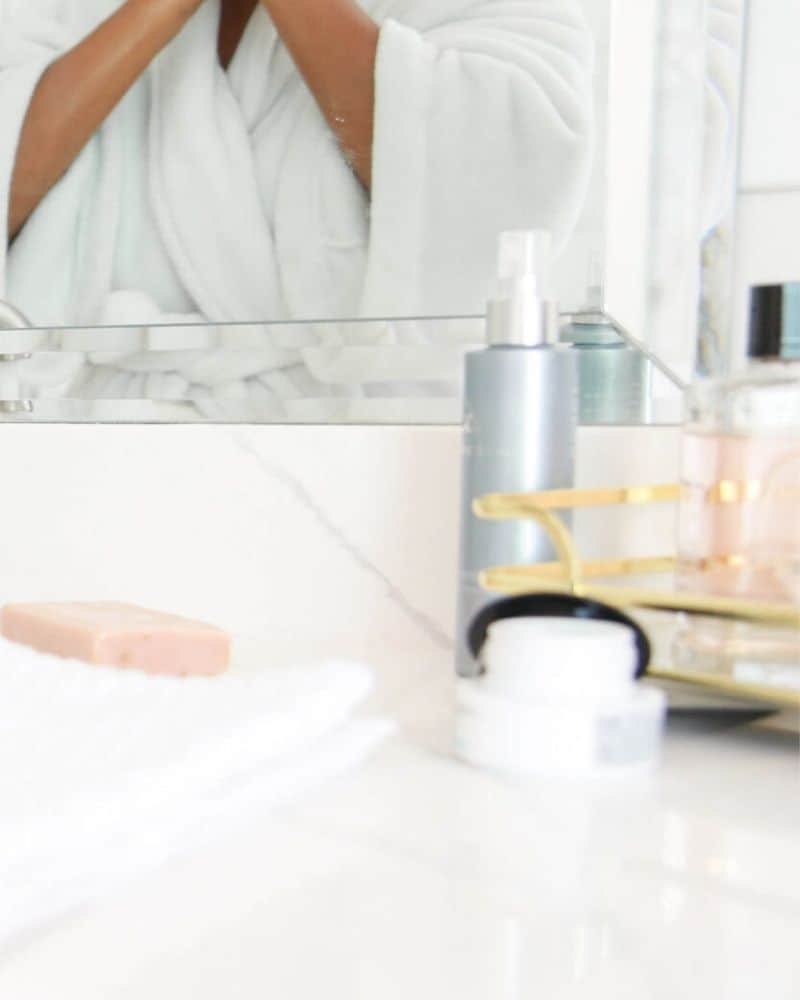Squalane vs Hyaluronic Acid: The Major Difference
This post may contain affiliate links.
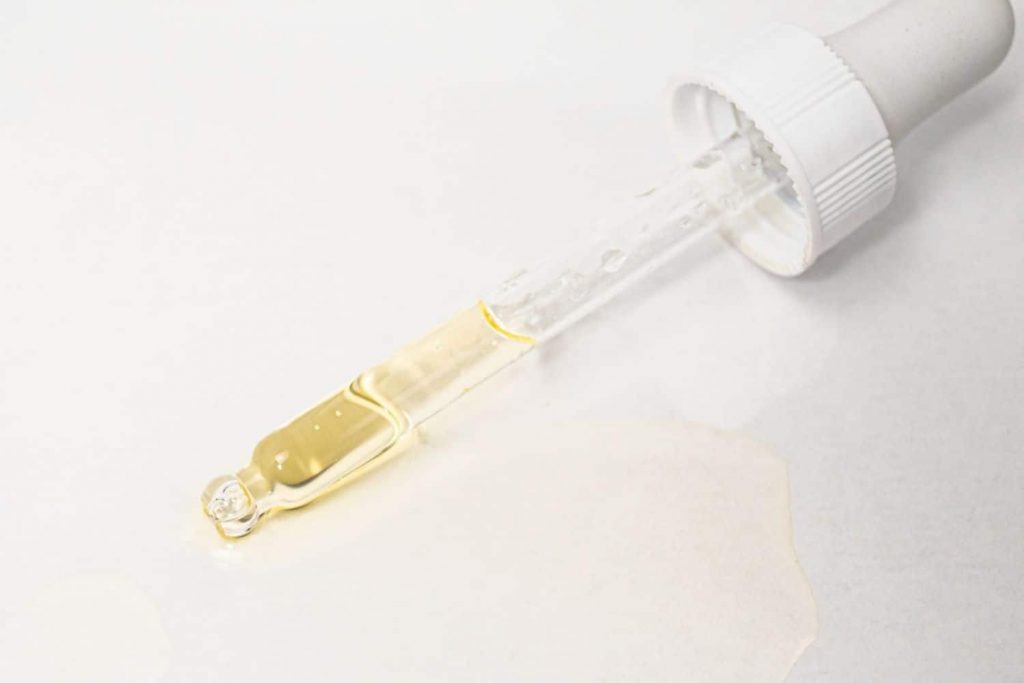
Squalane Vs Hyaluronic Acid
Squalane and hyaluronic acid both help to hydrate and moisturize the skin, but do so in very different ways. Which one is best for you will completely depend on your skin type. And although it may seem like they do the same thing, they’re actually very different ingredients. In this post, we’ll take a look at Squalane Vs Hyaluronic Acid and how to pick the right one for your skin type and skin concerns.
The Difference Between Squalene and Squalane
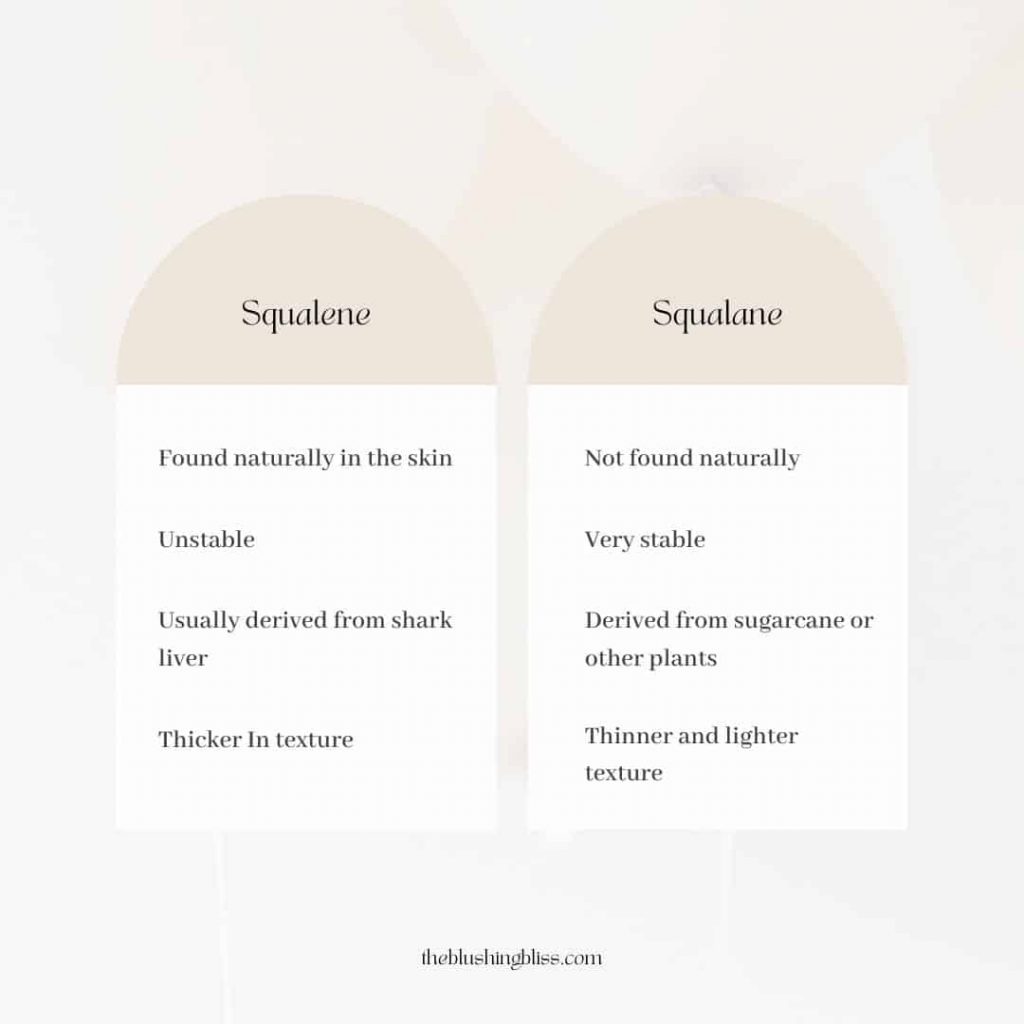
Before we take a look at squalane vs hyaluronic acid, we first need to determine what is the difference between squalene and squalane.
A one letter difference may seem insignificant, but the difference between squalane and squalene is actually a big one. Before diving into squalane vs hyaluronic acid, we first need to talk about squalane vs squalene.
What Is Squalene
Squalene with an e is a type of lipid that is commonly found in many fish oils like shark liver oil, as well as in many plant oils like olive oil. Squalene is naturally produced by our bodies and makes up about 13% of our skin’s sebum.
Its purpose for the skin is to help keep the skin moisturized and the skin’s moisture barrier strong and healthy. Squalene is extremely important for skin’s health.
It’s also been found that squalene has anticancer and antioxidant properties, in addition to its moisturizing properties.
So if Squalene is so great, why the need for squalane? Well, as we age the production of squalene slows down (this actually begins around 30), meaning our skin can become more susceptible to things like aging and cell damage from free radicals.
And the compound Squalene itself is relatively unstable and does not have a long shelf life. Squalene tends to go bad when exposed to oxygen, so it’s really not feasible to use squalene in skincare products. That’s where Squalane comes in. It’s a more stable version of Squalene that does all the same things.
What Is Squalane?
Squalane with an a is simply a hydrogenated version of Squalene. This means that the double bonds in squalene have been removed, making it more stable. (Who knew I’d still be using what I learned in Organic Chemistry in college).
Squalane has all the same benefits of squalene, with the added benefit of being stable, which is why squalane is what’s used in skincare products. Thanks to the hydrogenation process, we can get all the benefits of squalene in our skincare products.
Benefits Of Squalane
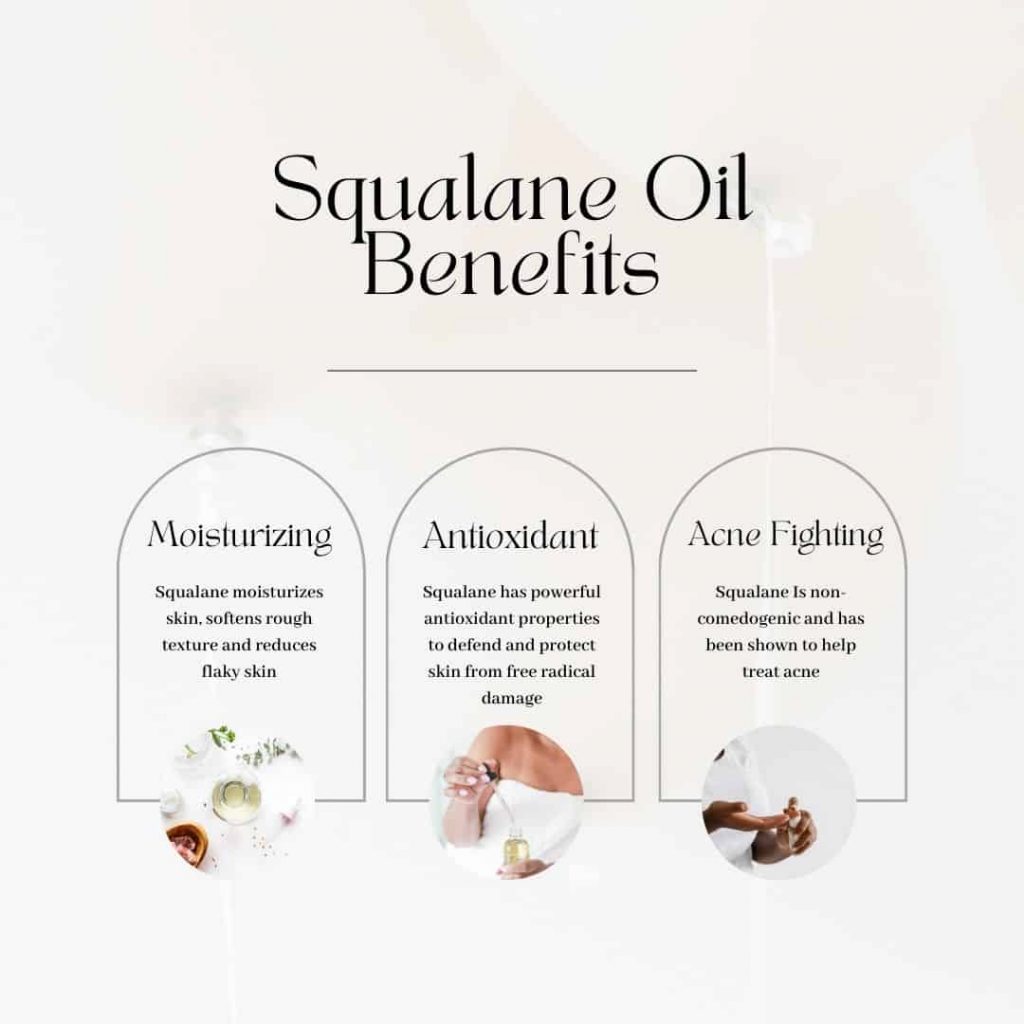
Squalane has all the benefits of Squalene (which is a lot), so here’s a look at all the things squalene and squalane can do.
- Antioxidant – one of the best benefits of squalane is that it has great antioxidant powers that can help defend skin against environmental aggressors like UV rays and pollution. Antioxidants can help prevent skin damage and premature aging
- Emollient – squalane is a great emollient that helps to soften the skin while reducing rough patches and flakiness. This is key when it comes to keeping the skin barrier strong and healthy
- Moisturizing – one of the things squalane is best at is moisturizing. It helps to keep the skin barrier strong which helps to lock in hydration. As we age, our skin tends to become drier, partly because the production of squalane slows down. Using squalane in your skincare routine can replace the loss and keep skin moisturized as you get older
- Wound healing – squalane promotes tissue repair and wound healing by stimulating immune cell response. This can help speed up the healing of cuts and scrapes or even acne and post-inflammatory hyperpigmentation
- Stimulates collagen – squalane can stimulate collagen production which can help firm the skin, prevent premature aging and diminish fine lines and wrinkles
- Treats acne – squalane has also been shown to help treat acne. It’s thought that squalane helps to balance the amount of unsaturated to saturated fatty acids, which can help treat acne
When Should You Use Squalane?
Although Squalane is considered an oil, it doesn’t really feel like one. It’s very lightweight and doesn’t feel greasy or oily. This is important when determining when to use squalane oil in your skincare routine. Because it’s considered an oil, you want to treat it like any other facial oil. That means you should use it after any serums or essences. Squalane oil can be used on top of or mixed in with your moisturizer, just depending on personal preference.
What Is Hyaluronic Acid
Hyaluronic Acid
Hyaluronic acid is a humectant that can hold up to 1000x its weight in water. It helps to attract water molecules into the skin which plumps skin and keeps it hydrated
Benefits: hydrates skin, smooths skin texture, stimulate collagen production, diminishes fine lines and wrinkles, may help acne
Best for: dehydrated skin, oily-acne prone skin but can be used by all skin types
How Often To Use: can be used 2x daily
Hyaluronic acid is a type of sugar molecule that is naturally produced by our bodies to hydrate our skin, eyes and joints. It holds water to keep the tissues moist and elastic. Hyaluronic acid has long been used in skincare products like moisturizers, serums and toners because it’s an excellent humectant.
Hyaluronic acid can hold up 1000x its weight in water which makes it great at keeping your skin hydrated. When applied topically, hyaluronic acid can deeply penetrate into the skin where it can bind with moisture to help retain moisture levels, which helps to keep your skin plump, hydrated and keeps your skin barrier healthy and strong.
However, as we age, our bodies produce less hyaluronic acid, which can lead to dry skin. Additionally, things like pollution, UV rays, etc., can damage the skin which can also affect how much hyaluronic acid our skin produces. That’s where topical hyaluronic acid comes in!
Benefits of Hyaluronic Acid
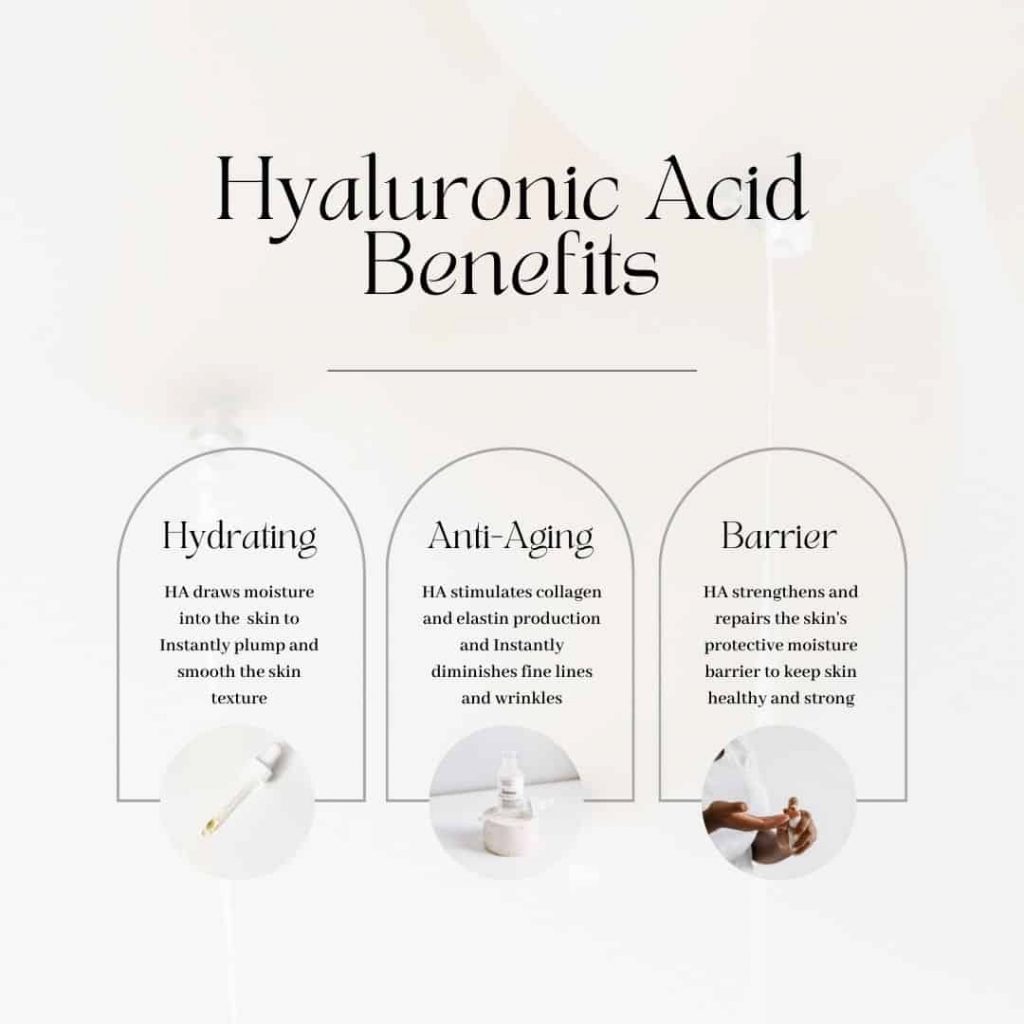
While hyaluronic acid has some incredible benefits, its main benefit is keeping the skin hydrated. It doesn’t have as many benefits of niacinamide, but it’s still an incredible skincare ingredient that everyone can benefit from. Here is where hyaluronic acid really shines:
- Hydration – as mentioned earlier, HA can keep skin hydrated by holding lots of water. This helps to plump the skin and prevent transepidermal water loss
- Heals Wounds – it’s been found that hyaluronic acid can also help speed up wound healing from cuts to acne. It does so by regulating the levels of inflammation in the skin and promoting tissue repair
- Smooths texture – A study found that topical HA helped significantly improve rough skin texture. Rough skin texture happens when skin becomes dehydrated or dry and skin has trouble shedding dead skin. When skin is hydrated and moisturized, the skin cells can properly shed and skin texture will be smoother
- Anti-aging – Hyaluronic acid helps to diminish fine lines and wrinkles by plumping the skin. HA can instantly help to plump fine lines and wrinkles and can also help plump them overtime by stimulating collagen and elastin production
- Stimulates collagen – HA is also involved in collagen synthesis, which over time, can help reduce wrinkles, sagging skin, increase firmness and elasticity
- Helps Acne – It’s been found that HA may indirectly help with acne thanks to its anti-inflammatory properties
- Strengthen’s the skin barrier – HA helps to keep the skin’s protective barrier strong so it can defend itself against irritants and pathogens while protecting skin against damage
Most people think that hyaluronic acid just helps with skin hydration. And while it does (very well, I might add), it also has some other incredible benefits for the skin.
Who Should Use Hyaluronic Acid
Since hyaluronic acid is naturally produced by our bodies, it’s something that everyone can use. Hyaluronic acid can help with general skin health, anti-aging and acne. So it’s really something that everyone should be using in their skincare routine!
Hyaluronic acid is found in almost every skincare product. Just take a look at your labels, and I’m sure you’ll find it on a few! From serums to body lotions, HA is an incredible skincare ingredient that’s been around for years. It’s safe and effective.
When Should You Use Hyaluronic Acid?
Because of it’s thin and water-y texture, hyaluronic acid should be used after cleansing and before moisturizing. Hyaluronic acid is usually found in toners, serums and essences, which are all water-y in texture.
What’s The Difference Between Hyaluronic Acid and Squalane?

While it may seem like hyaluronic acid and squalane do the same thing, they are actually very different. Hyaluronic acid is classified as a humectant that helps to attract water molecules into the skin. In fact, HA can hold up to 1000x its weight in water and can instantly plump the skin and hold in that hydration.
Squalane, on the other hand, is an emollient, which helps to soften and moisturize the skin. Its effects aren’t as instant as hyaluronic acid, but it can certainly help to keep hydration locked in and keep the skin barrier strong and healthy.
Difference between squalane and hyaluronic acid bottom line: hyaluronic acid can help replenish water in the skin, whereas squalane can help lock that hydration in while softening the skin and strengthening the barrier.
Related post: Which Is Better Squalane Or Rosehip Oil?
Squalane Vs Hyaluronic Acid Similarities
- Both hyaluronic acid and Squalene are both naturally produced by the bodies, and since Squalane is just a more stable form of Squalene, we know that it can be used to replace Squalene in our bodies to help moisturize the skin
- Both squalane and hyaluronic acid can help to promote a strong, healthy skin barrier
- Hyaluronic acid and squalane both help to promote wound healing and generate tissue repair
- Both squalane and hyaluronic acid are suitable for all skin types
Squalane Vs Hyaluronic Acid Differences
- Hyaluronic acid is a humectant which means it draws moisture into the skin from the environment. Squalane is a moisturizer that helps to lock hydration in the skin while providing nourishment to dry skin
- Hyaluronic acid helps to increase the skin’s water content which can instantly plump and hydrate the skin. Squalane helps to lock in hydration while moisturizing the skin and promoting a strong moisture barrier
- Hyaluronic acid serums are lightweight and pretty thin in texture. Squalane is a lightweight oil and some call it a dry oil because it absorbs into the skin easier and feels lightweight and not heavy or oily
Hyaluronic Acid Vs Squalane: Which Is Better?
So you’re probably wondering is hyaluronic acid or squalane better? Well, it depends. Although they’re both incredible ingredients that any skin type can use, you may get more benefit out of hyaluronic acid vs squalane.
Both hyaluronic acid and squalane are great ingredients that everyone can benefit from, but is there a better choice? It really all comes down to your skin type and your skin concerns.
If your skin is dehydrated, hyaluronic acid is the best option. Dehydration means your skin lacks water, so HA can help to replenish that lost water.
If your skin is dry, squalane will work better for you. Dry skin means lack of moisture and squalane will replenish that moisture while softening rough patches or flakes. It will also help strengthen the moisture barrier which will keep skin from getting dried out.
Or you can just get the best of both worlds by using both hyaluronic acid and squalane. The two are the perfect skincare combo for healthy skin!
Squalane Vs Hyaluronic Acid For Oily Skin
For oily skin types, both hyaluronic acid and squalane are great options and can help balance oily skin. Although squalane is an oil, it’s very lightweight and does not feel oily at all. It’s moisturizing abilities can actually help decrease oil production. Hyaluronic acid is very lightweight and is also a great option for oily skin.
Squalane Vs Hyaluronic Acid For Acne-Prone Skin
Squalane and hyaluronic acid are both non-comedogenic, so you don’t need to worry about these ingredients clogging pores. In fact, they’re both found naturally in the body so there is no reason for them to cause any breakouts. Is one better for acne prone skin? Not really, in fact, they’re both great. HA is thought to indirectly treat acne because of its anti-inflammatory properties and Squalane is antibacterial, so it can kill acne causing bacteria.
Squalane Vs Hyaluronic Acid For Dry Skin
If your skin is dry, it means it’s lacking oils. While hyaluronic acid can add hydration and water back into the skin, it won’t do much on its own to treat dry skin. Squalane, however, can help to add moisture back into dry skin and keep it locked in. It also helps to strengthen the moisture barrier, which can also help treat dry skin.
Can I Use Squalane And Hyaluronic Acid Together?
Absolutely! Hyaluronic acid and squalane together make an incredible pair for all skin types. Since hyaluronic acid is naturally produced by our bodies, there’s no risk of breakouts or issues. And since squalane is so similar to the sebum our skin produces, there is little to no risk when using squalane, even for oily and acne prone skin.
To use then together, you’ll always want to apply your hyaluronic acid first, followed by the squalane, that way the squalane can lock in that hydration and prevent trans-epidermal water loss.
Related post: Can You Mix Salicylic Acid And Hyaluronic Acid?
How To Use Squalane And Hyaluronic Acid Together
If you’re wanting to add squalane and hyaluronic acid into your routine but you’re not sure which one to use first, here is a guide to help you layer these ingredients properly.
Hyaluronic acid should always go before squalane no matter if your hyaluronic acid is in the form of a toner, serum or moisturizer. Hyaluronic acid will help to draw moisture into the skin and the squalane on top will lock it all in.
If you apply squalane before hyaluronic acid, the hyaluronic acid will not be able to penetrate to the skin through the squalane, so it won’t be able to work properly. Always use hyaluronic acid first followed by squalane.
Squalane Vs Hyaluronic Acid FAQ’s
Does Squalane moisturize or hydrate?
Squalane only moisturizes the skin and does not hydrate. Squalane does not have any humectant or hydrating properties.
Is squalane more hydrating than hyaluronic acid?
No, squalane is not more hydrating than hyaluronic acid. In fact, Squalane isn’t really very hydrating, it’s more moisturizing. Hyaluronic acid is a hydrating ingredient, so if you’re looking for hydrating, go with hyaluronic acid.
Can I mix hyaluronic acid with squalane oil?
While hyaluronic acid and squalane oil are great together, it’s best not to mix them. Use them separately. For example, use a hyaluronic acid serum and then follow up with a moisturizer and squalane oil. How to use Squalane and hyaluronic acid together? In general Squalane should always be used after HA because of its thicker texture.
Is Squalane Better Than Hyaluronic Acid?
It depends on your skin’s needs. Both squalane and hyaluronic acid are suitable for all skin types and both can help to keep your skin barrier strong and healthy. Squalane is an excellent moisturizer and helps to prevent trans-epidermal water loss while locking in moisture. Hyaluronic acid is great for adding hydration and plumping the skin instantly. Both are beneficial for skin, but it depends on what type of skin care benefits you are looking for.
If your skin seems dehydrated, tight or dull, hyaluronic acid will instantly replenish your skin with lots of hydration. On the other hand, if your skin is flaky, dry and rough, squalane will help to prevent water loss while moisturizing the skin.
Best Hyaluronic Acid Products
Versed Hydration Station Serum Booster
With two types of hyaluronic acid to intensely hydrate the skin from the outermost layer to the deep inner layers, this Versed serum will keep your skin hydrated all day and night. This serum is lightweight but delivers tons of hydration to the skin.
Glycerin and Indian Cress Extract are also humectants to add even more hydration and keep that water locked into your skin. This is a versatile product that can be used on its own or mixed in with other serums and moisturizers.
Naturium Quadruple Hyaluronic Acid Serum 5%
When it comes to hyaluronic acid serums, the more HA the better. This serum has 4 different molecular weights of HA that all work differently to hydrate each layer of the skin and keep all that moisture locked in. With so much HA, this serum will instantly plump fine lines, wrinkles and crows feet while minimizing the appearance of pores.
No. 7 HydraLuminous Water Concentrate
This serum feels like water on the skin and instantly plumps skin full of hydration. It uses the HydraDrench Complex to infuse skin with moisture, while the Pollution Shield Technology protects skin from environmental damage. Vitamin C also helps to brighten skin tone, fight free radical damage and act as an antioxidant.
The Inkey List Hyaluronic Acid
Hyaluronic acid and glycerin combine to create an insanely hydrating product with added powers of Matrixyl 3000™ peptide which helps to combat aging. HA and the peptide stimulate collagen production, firms skin and plumps fine lines and wrinkles. You can’t go wrong with this serum (especially since it’s less then $8 a bottle!).
Best Squalane Products
The Ordinary 100% Plant-Derived Squalane
100% Plant-Derived Squalane from The Ordinary is a lightweight powerhouse for healthier skin. It’s cult-favorite for a reason! All the wonderful benefits of Squalane in a super affordable product. It helps to soften skin, strengthen the skin’s barrier and can even be used on the hair! It sinks in quickly and leaves skin feeling soft and smooth.
Naturium Plant Squalane Face Oil 100%
The Naturium Squalane Oil is a luxurious and lightweight facial oil that provides endless skin benefits. Made from sugarcane-derived squalane oil, this product moisturizes skin while providing anti-oxidant defenses to combat the effects of increased environmental stressors.
The Ordinary Squalane Cleanser
A creamy oil-like cleanser with healthy skin in mind, this Squalane cleanser by The Ordinary helps to remove makeup and gently cleanse the skin without stripping. Packed with squalane and other skin loving ingredients, your skin will feel hydrated, soft and smooth after use.
Biossance Squalane + Vitamin C Rose Oil
Squalane and vitamin c combine to create a powerful duo of brightening, firming, and hydrating results in one lightweight facial oil. Rich in vitamin C and Chios Crystal Oil that firms and revitalizes your skin for more youthful looking skin. Squalane locks in moisture and damascus rose petal extract calms and soothes skin.
Best Hyaluronic Acid and Squalane Products
Why choose between squalane vs hyaluronic acid? These products combine both SQ and HA to provide the most nourishment for the skin.
Biossance Squalane + Omega Repair Cream
This is the ultimate, decadent moisturizer for dry or normal skin types. Loaded with lightweight plant fats, this cream will nourish and repair your skin’s moisture barrier while giving you a long lasting hydration fix! With no greasy residue to worry about, Squalane + Omega Repair Cream if packed with hyaluronic acid, squalane, shea butter, ceramides and fatty acids – literally everything your skin needs! Its silky-smooth texture makes this product one of my absolute favorites.
Biossance Squalane + Glycolic Renewal Mask
The perfect squalane and hyaluronic acid product for oily, acne prone skin types, or those dealing with texture, dull skin or hyperpigmentation. With Glycolic, Lactic, Tartaric & Malic acids, this 10-minute treatment will reveal smoother, brighter and clearer skin. Squalane and hyaluronic acid will help to keep skin hydrated and moisturized to protect the skin barrier and avoid overexfoliation. Licorice root helps to calm irritation or sensitivity.
Biossance Squalane + BHA Pore Minimizing Toner
Another great pick for acne-prone skin, this toner will help kill acne causing bacteria, regulate oil production, unclog pores, reduce pore size and eliminate blackheads, all while keeping skin balanced and the skin barrier strong. Squalane, hyaluronic acid and multiple plant and fruit extracts help to keep the skin barrier strong and keep skin hydrated, moisturized and balanced. BHA derived from willow bark will clarify skin without causing irritation or dryness.
Versed Dew Point Moisturizing Gel Cream
A lightweight moisturizer that absorbs instantly and doesn’t leave skin feeling greasy or clogged. Sodium hyaluronate, aloe leaf juice, green tea antioxidants, and natural plant-derived squalane hydrate skin with healthy ingredients while fighting damaging free radical damage. The jelly-like texture make this moisturizer super lightweight yet extremely nourishing thanks to its incredible ingredients list.
Squalane Vs Hyaluronic Acid: Wrap Up
Squalane and hyaluronic acid are two very popular ingredients in the skincare industry. The popularity of both these products can be attributed to their ability to moisturize, strengthen skin’s barrier function, brighten dull or hyperpigmented skin, reduce pore size and soothe irritated or sensitive skin. Though they have similar benefits for your skin, there are some differences between squalane vs hyaluronic acid that you should consider before making a purchase decision.
- Hyaluronic acid and squalane are both incredible ingredients that are suitable for all skin types. Hyaluronic acid and squalane together work to plump the skin with hydration and keep all that hydration locked in for smooth, nourished and healthy skin
- Hyaluronic acid is a humectant that draws moisture into the skin which increases the water content of the skin. Squalane is a moisturizer that helps to lock in hydration to keep it from escaping
- Hyaluronic acid and squalane can be used together and hyaluronic acid should always be used before squalane


